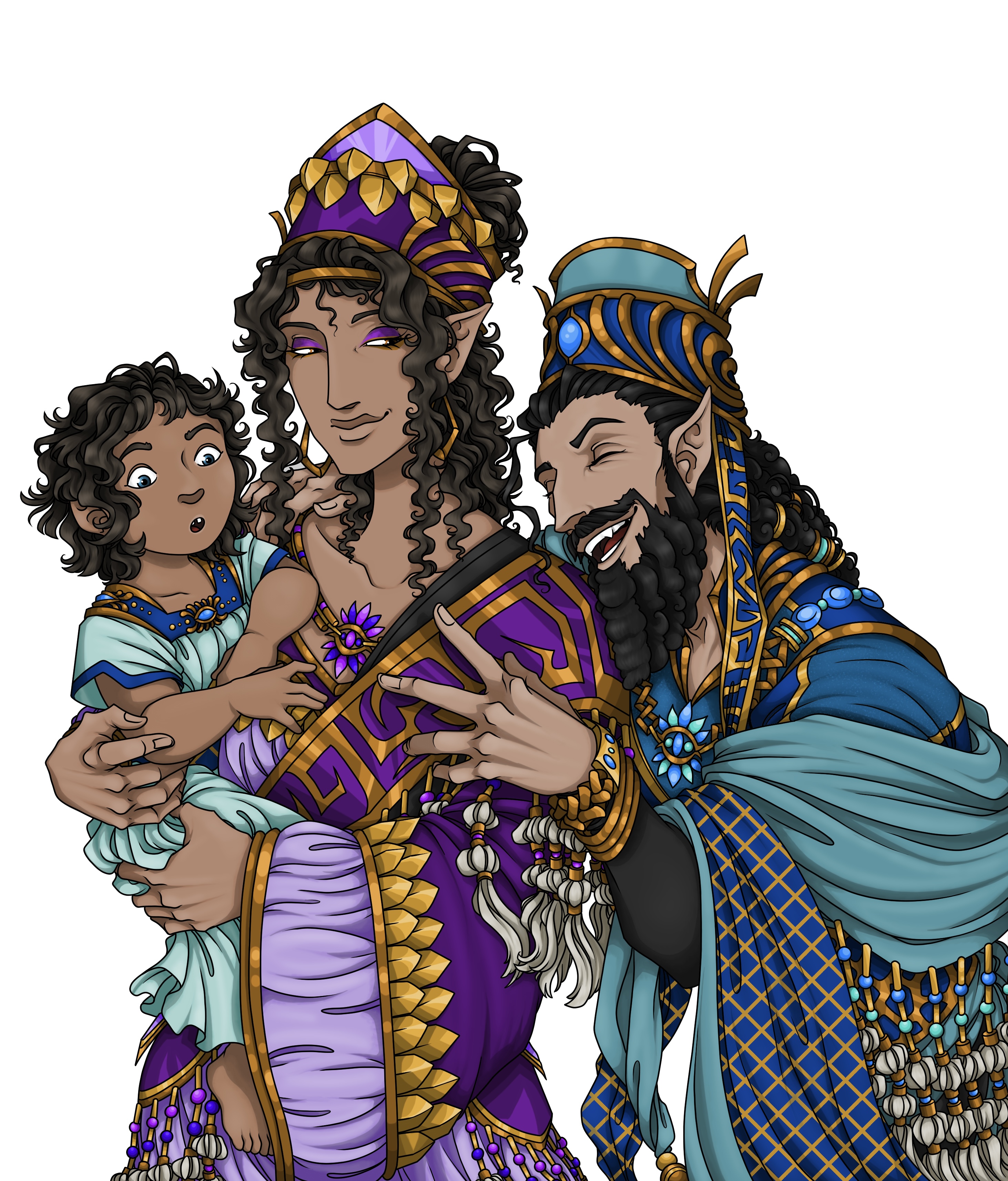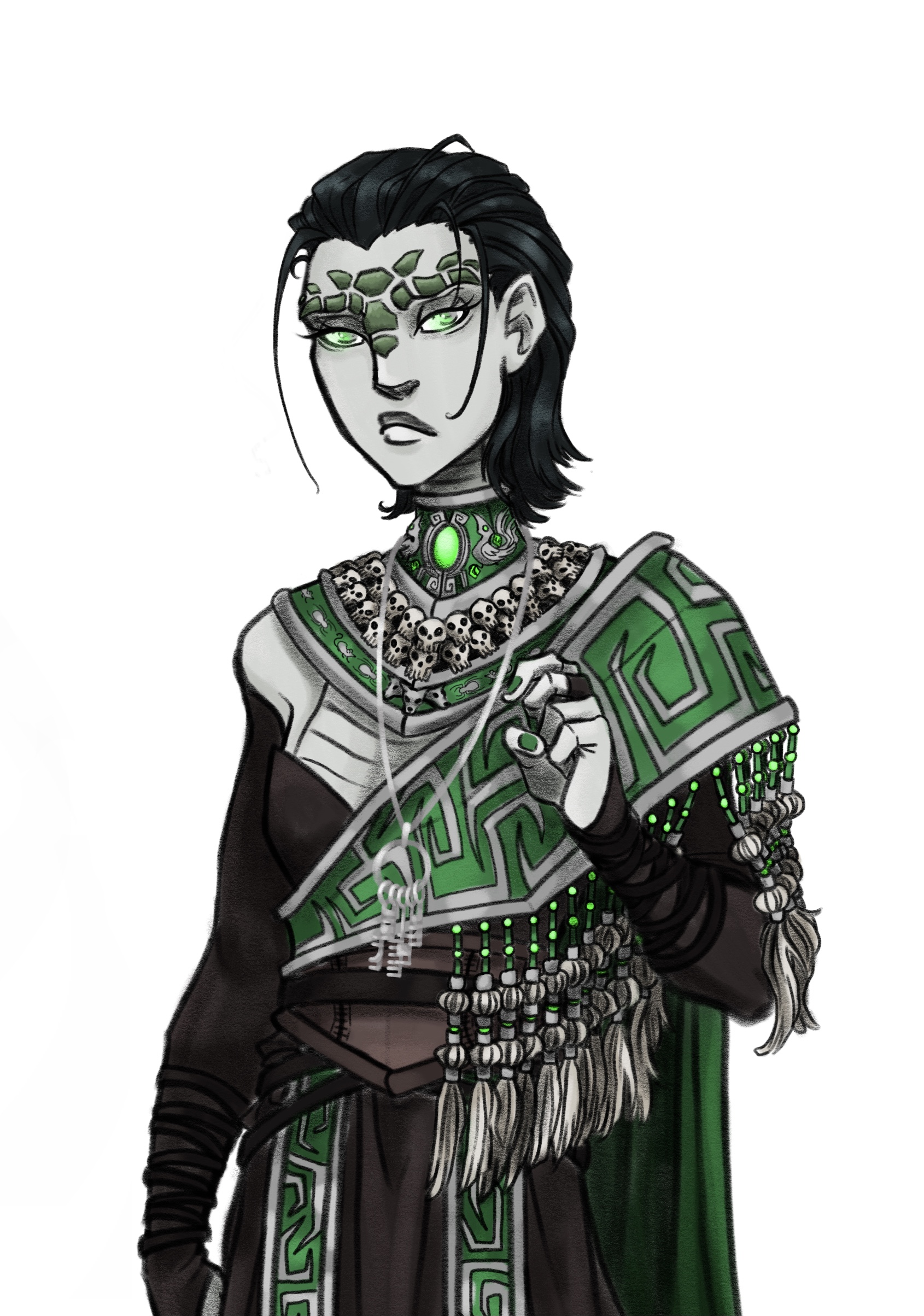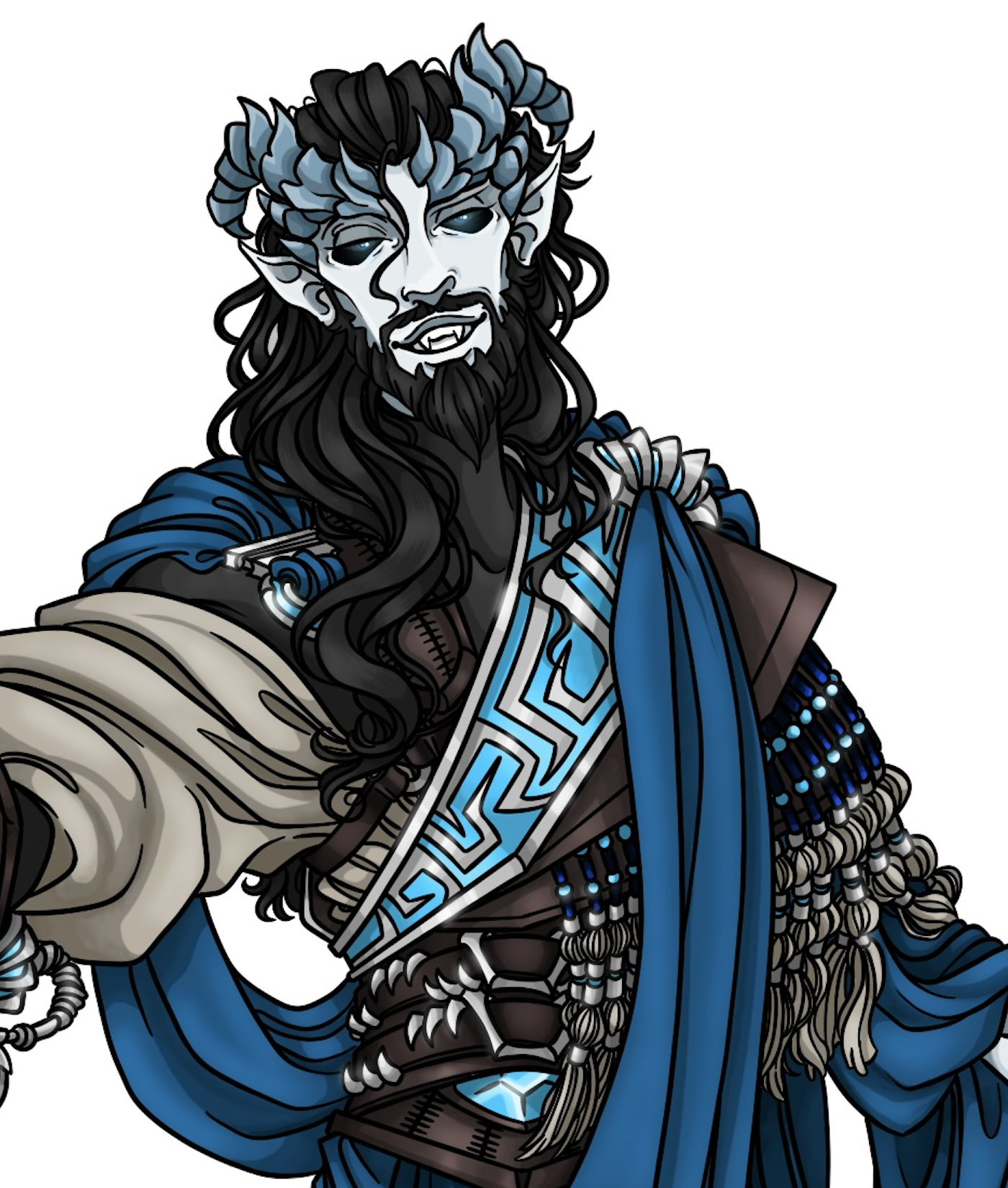Abla'kerályi
The abla'kerályi is a sash-like garment decorated with colorful or metallic, sharp patterns and symbolism (often inspired by arcane runes and incantations), extensive beading work, and tassels made of treated hair or a hair-like material. On Dremora, the abla'kerályi is primarily worn as a symbolic item by the Szadarians, a cultural group within Parvathi'Lahn that primarily resides within (or near) the City of Fortune. The abla'kerályi is a reminder of a world and home lost and is commonly worn during times of mourning, remembrance, and for formal ceremonies and celebrations.
History
The ably'kerályi is notable in that it did not originate in this world. Its origins belong to a world not ruled by The One, but by The Eternal. This garment was brought to Dremora by a group of refugees who fled the destruction and cruel, imposed immortality of their world. They traveled through a planar gate bound to Ah'Shal's Court, which had been previously kept securely locked and sealed by the Dremoran death goddess for thousands of years.
In Szem'Szadar, Lost City of a Lost World
In the Great City of Szem'Szadar, the abla'kerályi was worn only by the god-king, god-consort, other members of the royal family, the upper ranks of the nobility, and the mortals who helped the god-king become god-king in the first place. The garment was a symbol of status and made those of the highest echelon of society easily identifiable.
The patterns of the abla'kerályi often denoted family lineage, god-king lineage (as this was not always familial in Szem'Szadar), and important magical features most deeply tied to the god-king, their domain, and their city. The god-king's abla'kerályi was often a magical item, infused with lingering traces of the god-king's power, even when they had reverted to their mortal beginnings at the end of their reign. The abla'kerályi of the last god-king of Szem'Szadar, Atu Szeme, contained traces of his elemental affinity and volatiliy.
In Parvathi'Lahn, the City of Fortune
The survivors of Szem'Szadar (deemed Szadarians) – those led to Dremora by god-king Atu Szeme and his god-consort, Hithvessa – eventually settled in the new lands of Parvathi'Lahn, under the guidance of Newt, Atu's eldest son. Although Hithvessa remains the ruler of her people, she has shed her title of god-consort. Similarly, the abla'kerályi has shed its ties to royalty and nobility. Now, this garment is worn by all Szadarians during times of remembrance, periods of mourning, and during large festivals and celebrations. It is worn in honor of a home, a world, and a god-king lost.
The patterns of current abla'kerályi still often define family lineage, but they have lost much of their additional meanings, save for those worn by the last of Atu Szeme's family. In addition, Parvathian is often depicted and seen wearing his own personal abla'kerályi, which was gifted to him by Hithvessa when she became his first Majordomo. The recently elevated god of fortune wears it now to show unity and to also distance himself from his heritage in Caliban. While all Szadarians have an abla'kerályi (and in some cases, multiple), Parvathian, Highvessa, and Atu's offspring are the only ones with an abla'kerályi in purple.
Construction & Materials
As this garment was originally made in a world now lost, its construction and the materials used have changed based on what is available on Dremora.The Original Abla'kerályi
The abla'kerályi traditionally was fashioned in two styles: rigid and draped. The rigid variant was made of reinforced fabric inlaid with thin boning to give it a rigid structure. The colorful, patterned portion of the abla'kerályi could be sewn to one or more layers of leather, which was often unadorned. The leather additions were often preferred by warriors (and Atu himself in his later years). The draped version was made of more flowing, delicate fabrics – often material similar to fine silks and satins.
Strands of beading were attached along one edge of the abla'kerályi. These beads were often made of glass, metal, and/or gemstones. The most renowned abla'kerályi crafters would often construct beads of pure magic or of pure elements. A droplet of water, for example, might be permanently suspended in bead-form and affixed to a strand. Or, for a god-king, a drop of blood from their predecessor was often bound to a bead and set within their first abla'kerályi received upon their crowning. Tassels were attached to each bead strand. Originally, tassels were derived from a common plant that grew on the crystal water pools around Szem'Szadar. These plants grew "hair-like" roots that could easily be cut and harvested (without killing the plant) by swimmers and divers.
The Current Abla'kerályi
On Dremora, the textiles needed for the abla'kerályi is now imported from the Heart of the Desert and various other villages and towns in the Dune Sea to the south of Parvathi'Lahn. Over the last century, Szadarian artisans have worked alongside established Lark'Hal artisans to master working with Dremoran textiles. Now, there are at least a dozen, notable Szadarian-owned and operated shops that make custom abla'kerályis.
Beads are still made from similar materials, though the process of making "magic beads" has been lost. Instead, beads are often etched or inscribed with symbols of luck and fortune, nods to the god that embraced them. Imported goat hair is primarily used for the tassels. Some Szadarians have replaced the tassels with feathers, particularly those with close ties to the Elian people to the north.
Item type
Clothing / Accessory
Creation Date
Long before 0 YAR
Examples
God-Consort Hithvessa and God-King Atu Szeme with their daughter, Hith'Elemy'Lanvi prior to the destruction of Szem'Szadar. Both consort and king wear an abla'kerályi, though Hithvessa's is the rigid variant while Atu's is the flexible variant.
While purple was associated with the god of fortune and his Majordomo, green abla'kerályi were commonly worn by those with strong ties to Ah'Shal or were worn specifically during times of mourning. Oksha, an acolyte of Ah'Shal in the City of Fortune, often wore the green abla'kerályi originally gifted to her by Hithvessa.
In his final years as a war lord, Atu often donned an abla'kerályi with multiple leather layers that was typically visible only in his disguised humanoid form.






Comments